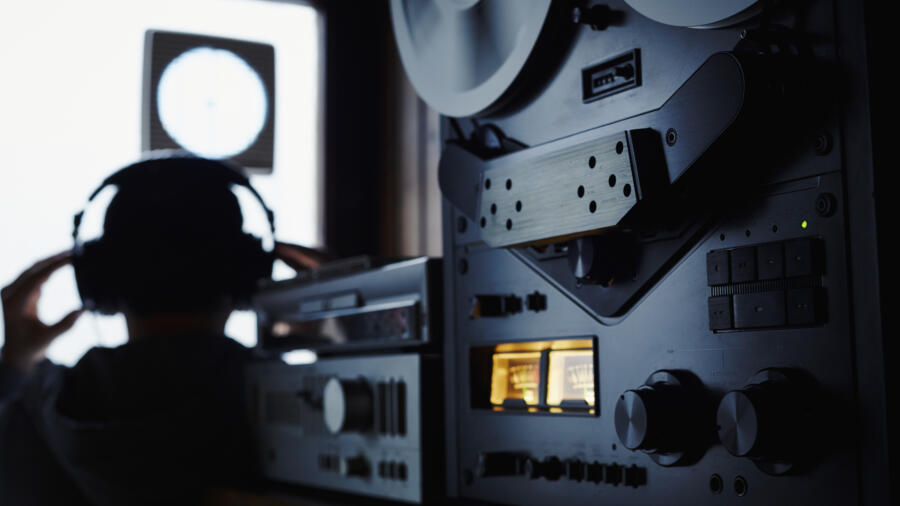“Oh my god. I’m going to die, and nobody is going to find the body.”
That’s what kept going through James Atkinson’s mind as he sat, passenger side, next to a radical Islamist terrorist, the pair barreling down a Canadian highway at 140 miles an hour. They’d intermittently exit onto dirt roads, where clouds of dust would kick up behind them as they raced and stopped—sometimes in covered parking lots, sometimes under overpasses—to change vehicles before peeling back toward the highway on a frenzied circuitous journey to somewhere away from the government’s watchful eye.
And while the driver was doing all he could to evade the feds, the bugs Atkinson was wearing went right on recording: the shifting of the gears, the squealing of the brakes, the ever-louder beating of his heart.
A professional eavesdropper, Atkinson was on assignment with the Federal Bureau of Investigation. Now a private consultant in technical-surveillance countermeasures, Atkinson spent decades designing and installing devices for audio interception (i.e. bugs) for agencies like the FBI, CIA and the U.S. Army.
In this case, the target had contacted him, in the hopes he’d be able to manufacture military-grade walkie-talkies for use in the Afghan mountains. The FBI knocked on Atkinson’s door within hours of initial contact, imploring him to take on the job undercover.
It turned into a series of nightmares, Atkinson says, well beyond the stomach-churning race on the roadways: The meeting lasted more than 14 hours, and his principal bug’s battery ran out of juice after only six. His back-up bug fared little better, dying after eight hours.
Luckily, he was wearing two more pieces.
All in a day’s work, Atkinson says, for a job people continue to largely misunderstand—including the people he’s spied on, who often think they’ve taken the necessary precautionary measures to avoid his uninvited ear.
“One of the big misconceptions of people who are afraid of eavesdropping is that if they have their windows lined with…thin gold foil…they can’t be eavesdropped on,” Atkinson says.
Wrong.
Others think “by having a thick concrete wall, that makes them safe against physical attacks, it somehow makes them immune from electronic attacks.”
No.
Still others think by lining a room in copper, or by holding their secretive meetings in the top floors of skyscrapers—far from ground-level surveillance vans—they’ll keep Atkinson and his ilk away.
None of those measures works, he says.
“Eavesdroppers can climb outside of windows,” he says, noting that one should be wary of the window washer.
Then there are those who try to buy their way to privacy. That’s what one Saudi prince attempted during a stay in the Washington, D.C. area in 1990, when he and his entourage rented out parts of three floors of a hotel, during the lead-up to the Gulf War.
“They had taken out…the floor above, the floor below,” but only on one side of the hotel. And yet despite having a “small army” of security guards, the prince had failed to rent out the room directly across from his own.
Picking up on the vulnerability, Atkinson and his team turned that space into their “listening room.” From there, they took a heated probe and pushed it under the carpet, melting the carpet glue in a path from inside the listening room to under the door, across the hallway, and into the prince’s room. Then the team pushed several microphones into the targeted room.
“We were able to pick up extraordinarily clean audio, because the carpet actually reduced the reflections and the echo effect… It was as if somebody had microphoned a rock star at a concert.”
Other surveillance challenges require more blatantly creative solutions.
In the 1960s, the CIA attempted to spy on the Russians by surgically inserting recording devices into cats, which were then released near Soviet embassies. The hope for the project—dubbed Acoustic Kitty—was that the cats would cuddle up near foreign-intelligence agents in the outdoor spaces near the government buildings, thus picking up their conversations. But the project, which cost over $20 million, was a disaster—the first cat, released near the Soviet embassy in Washington D.C., was struck by a car and killed its first day on the job.
But while the CIA’s declassification of that project in 2001 made news, Atkinson says it’s actually nothing groundbreaking.
“Planting of listening devices into the fur, just under the fur of a domestic animal, has actually been going on for quite a long time… Acoustic Kitty is not a particularly different type of thing,” he says, adding that listening devices have been placed on “cats, a bunny rabbit, a guinea pig, a rat, a mouse, a raccoon, squirrels.”
Atkinson says he’s even designed a bug that could be “injected with a large-bore needle… harmlessly under the fur of a dog.”
Other times, listening devices have been implanted on “large cockroaches,” meaning that counterintelligence agencies have literally bugged bugs.
Snooping, Atkinson says, is pervasive. Cops listen in on organized crime, governments scope out their enemies and their allies, and private citizens put ears on their competitors in all matters, personal and professional. And with surveillance devices ever cheaper and ever more ubiquitous (think: any given cell phone), it’s easy to go crazy once you believe someone might be listening.
But instead of doing that, Atkinson says, it’s better to stay calm.
“Get out of that premise so you can think straight and objectively.”
Then, he says, call or email someone like him and ask for help.
Just don’t do it on your cell phone. Or from your email address. Or from inside your house.
More Features:
How Law Enforcement Is Using Drones to Aid in Search and Rescues
If Google Can Have Your Data, Can Police Investigating Crimes Have It Too?


